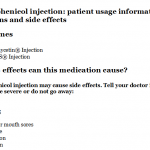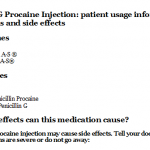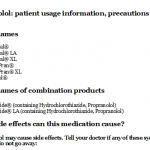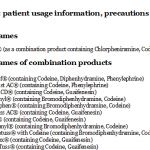
Havrix: Hepatitis A Vaccine: patient information, prescribing information, ingredients, manufacturer, adverse reactions and side effects
Saturday, April 08, 2017 by Gregory Van Dyke
http://www.naturalnewsreference.com/2017-04-08-havrix-hepatitis-a-vaccine-patient-information-prescribing-information-ingredients-manufacturer-adverse-reactions-and-side-effects.html
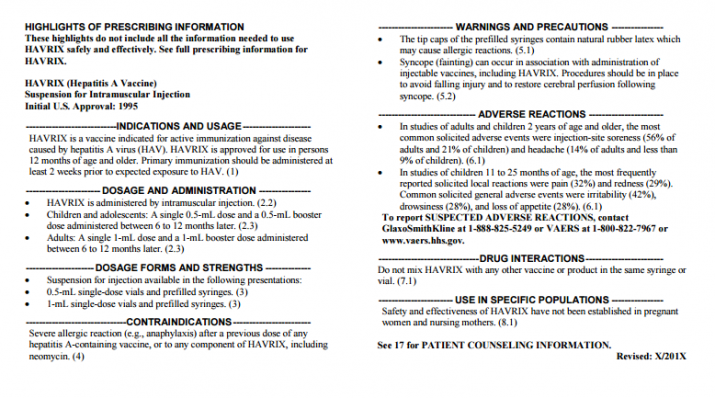
HIGHLIGHTS OF PRESCRIBING INFORMATION
These highlights do not include all the information needed to use HAVRIX safely and effectively. See full prescribing information for HAVRIX.
See full insert sheet at this link at the Natural News Reference website.
HAVRIX (Hepatitis A Vaccine)
Suspension for Intramuscular Injection
Initial U.S. Approval: 1995
INGREDIENTS AND EXCIPIENTS
HAVRIX (Hepatitis A Vaccine) is a sterile suspension of inactivated virus for intramuscular administration. The virus (strain HM175) is propagated in MRC-5 human diploid cells. After removal of the cell culture medium, the cells are lysed to form a suspension. This suspension is purified through ultrafiltration and gel permeation chromatography procedures. Treatment of this lysate with formalin ensures viral inactivation. Viral antigen activity is referenced to a standard using an enzyme linked immunosorbent assay (ELISA), and is therefore expressed in terms of ELISA Units (EL.U.).
Each 1-mL adult dose of vaccine contains 1440 EL.U. of viral antigen, adsorbed on 0.5 mg of aluminum as aluminum hydroxide.
Each 0.5-mL pediatric dose of vaccine contains 720 EL.U. of viral antigen, adsorbed onto 0.25 mg of aluminum as aluminum hydroxide.
HAVRIX contains the following excipients: Amino acid supplement (0.3% w/v) in a phosphate-buffered saline solution and polysorbate 20 (0.05 mg/mL). From the manufacturing process, HAVRIX also contains residual MRC-5 cellular proteins (not more than 5 mcg/mL), formalin (not more than 0.1 mg/mL), and neomycin sulfate (not more than 40 ng/mL), an aminoglycoside antibiotic included in the cell growth media.
HAVRIX is formulated without preservatives.
HAVRIX is available in vials and prefilled syringes. The tip caps of the prefilled syringes contain natural rubber latex; the plungers are not made with natural rubber latex. The vial stoppers are not made with natural rubber latex.
INDICATIONS AND USAGE
HAVRIX is a vaccine indicated for active immunization against disease caused by hepatitis A virus (HAV). HAVRIX is approved for use in persons 12 months of age and older. Primary immunization should be administered at least 2 weeks prior to expected exposure to HAV. (1)
DOSAGE AND ADMINISTRATION
HAVRIX is administered by intramuscular injection. (2.2)
Children and adolescents: A single 0.5-mL dose and a 0.5-mL booster dose administered between 6 to 12 months later. (2.3)
Adults: A single 1-mL dose and a 1-mL booster dose administered between 6 to 12 months later. (2.3)
DOSAGE FORMS AND STRENGTHS
Suspension for injection available in the following presentations:
– 0.5-mL single-dose vials and prefilled syringes. (3)
– 1-mL single-dose vials and prefilled syringes. (3)
CONTRAINDICATIONS
Severe allergic reaction (e.g., anaphylaxis) after a previous dose of any hepatitis A-containing vaccine, or to any component of HAVRIX, including neomycin. (4)
WARNINGS AND PRECAUTIONS
The tip caps of the prefilled syringes contain natural rubber latex which may cause allergic reactions. (5.1)
Syncope (fainting) can occur in association with administration of injectable vaccines, including HAVRIX. Procedures should be in place to avoid falling injury and to restore cerebral perfusion following syncope. (5.2)
ADVERSE REACTIONS
In studies of adults and children 2 years of age and older, the most common solicited adverse events were injection-site soreness (56% of adults and 21% of children) and headache (14% of adults and less than 9% of children). (6.1)
In studies of children 11 to 25 months of age, the most frequently reported solicited local reactions were pain (32%) and redness (29%). Common solicited general adverse events were irritability (42%), drowsiness (28%), and loss of appetite (28%). (6.1)
DRUG INTERACTIONS
Do not mix HAVRIX with any other vaccine or product in the same syringe or vial. (7.1)
USE IN SPECIFIC POPULATIONS
Pregnancy
Pregnancy Category C: Animal reproduction studies have not been conducted with HAVRIX. It is also not known whether HAVRIX can cause fetal harm when administered to a pregnant woman or can affect reproduction capacity. HAVRIX should be given to a pregnant woman only if clearly needed.
Nursing Mothers
It is not known whether HAVRIX is excreted in human milk. Because many drugs are excreted in human milk, caution should be exercised when HAVRIX is administered to a nursing woman.
Pediatric Use
The safety and effectiveness of HAVRIX, doses of 360 EL.U. or 720 EL.U., have been evaluated in more than 22,000 subjects 1 year to 18 years of age.
Geriatric Use
Clinical studies of HAVRIX did not include sufficient numbers of subjects 65 years of age and older to determine whether they respond differently from younger subjects. Other reported clinical experience has not identified differences in overall safety between these subjects and younger adult subjects.
Safety and effectiveness of HAVRIX have not been established in pregnant women and nursing mothers. (8.1)
Revised: X/201X
https://www.fda.gov/downloads/BiologicsBloodVaccines/Vaccines/ApprovedProducts/UCM224555.pdf
http://naturalnewsreference.com/vaccine-insert-sheets/Havrix-Hepatitis-A-Vaccine.pdf
Tagged Under: Tags: dosage, havrix, ingredients, insert sheet, side effects, usage, warnings

